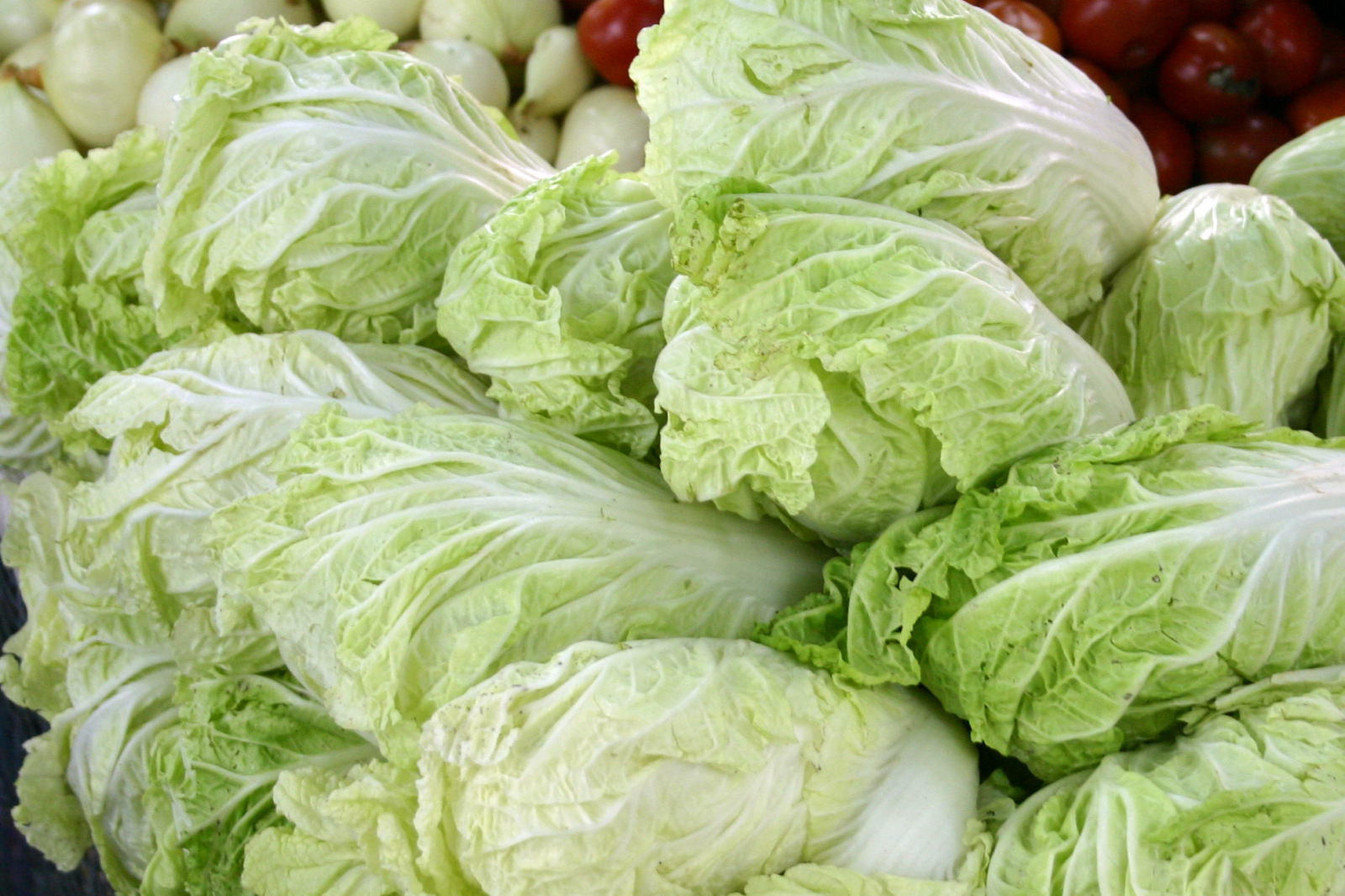Chinese cabbage is a very popular vegetable in Thai cooking. It can be eaten fresh as a counterpoint to spicy foods such as red chili dip, or cooked in a variety of soups and stir-fries to add substance and flavor.

Chinese cabbage grows in an elongated head that is rather loosely gathered compared to the hard headed cabbages typically found in western supermarkets. The leaves have a strong centre stalk, and closely resemble romaine lettuce. The edge of the leaves usually have only the merest hint of green tint, with the rest being almost snow white. The shape makes an excellent spoon for eating red chili dip.
In western supermarkets, Chinese cabbage may be labelled as bok choy or siew choy, although in most supermarkets here in the Pacific Northwest it’s labeled “Napa”. In Korea, Chinese cabbage is the main ingredients in kim chee, a pickled vegetable that can be fiery hot. Thais will also pickle cabbage, usually using simply water from washing rice.
Chinese cabbage does indeed originate in China, where it has probably been cultivated for many centuries. Chinese traders transplanted the vegetable to their business communities throughout South-east Asia, although it doesn’t appear that the locals in places such as Malaysia and Thailand starting using Chinese cabbage in their own cuisines until the last few hundred years.